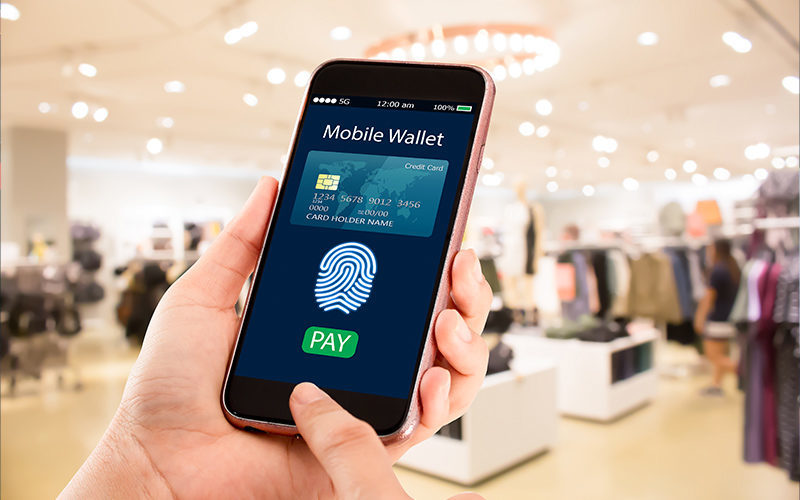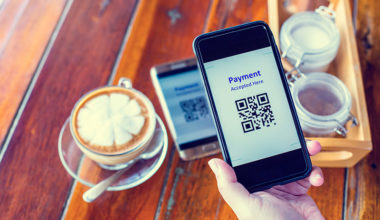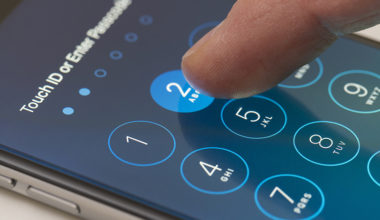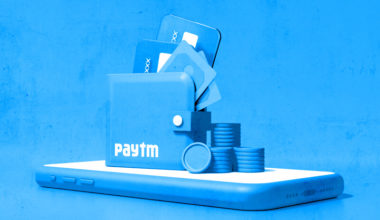Table of Contents Show
What is UPI?
UPI (Unified Payments Interface) is a real-time payment system that facilitates instant fund transfers between bank accounts in India. It allows users to link multiple bank accounts to a single mobile application, providing a seamless and secure platform for making payments. UPI is regulated by the National Payments Corporation of India (NPCI).
UPI was launched in India on April 11, 2016. It was launched by the Reserve Bank of India (RBI) and NPCI in collaboration with various banks and payment service providers. UPI aims to simplify digital payments and promote financial inclusion by enabling easy and convenient money transfers.
Let’s Get into the Details of UPI
UPI, which stands for Unified Payments Interface, is a convenient and secure way to make payments, as it eliminates the need for traditional methods like cash or cards.
To use UPI, you need two important pieces of information: UPI ID and UPI PIN. UPI ID is a unique virtual payment address that you create during the registration process. It is similar to an email address, but instead of letters, it consists of numbers or alphabets. For example, your UPI ID could be something like johnsmith@upi or 1234567890@upi. On Paytm, your UPI ID will look like 1234567890@paytm.
On the other hand, a UPI PIN is a four or six-digit numeric password that you set up during the registration process. It acts as a secure key to authorize transactions made through UPI. Just like you would enter a PIN for your ATM card, you need to enter your UPI PIN when initiating a UPI transaction to authenticate and complete the payment.
With UPI, you can send money to friends, and family, or even pay for goods and services directly from your bank account. It simplifies the payment process and allows you to make transactions anytime, anywhere, without the hassle of carrying cash or physical cards.
Features of UPI
- UPI enables real-time money transfers between bank accounts, ensuring quick and seamless transactions.
- Its services are available round the clock, allowing users to make transactions at any time, even outside of traditional banking hours.
- UPI provides a unified platform means a single platform like Paytm that enables users to link and manage multiple bank accounts from different banks in one app.
- It eliminates the need to share bank account details for each transaction. Users can create a unique UPI ID, similar to an email address, to receive payments securely.
- UPI enables a wide range of transactions, including person-to-person transfers, payments to merchants, bill payments, and even cash-on-delivery transactions.
- UPI offers a convenient “Scan and Pay” feature, allowing users to make payments instantly by scanning QR codes, eliminating the need for cash or cards.
- UPI provides users with a detailed transaction history and real-time notifications, keeping them updated about their payment activities.
- UPI allows users to conveniently pay their utility bills, such as electricity, water, and gas bills, directly from their bank accounts with just a few taps.
Benefits of UPI for Merchants
- Increased customer convenience: UPI enables customers to make payments directly from their bank accounts, eliminating the need for cash or card transactions. This enhances the overall payment experience for customers.
- Faster settlement: UPI facilitates real-time fund transfers, allowing merchants to receive payments instantly. This improves cash flow and reduces the waiting time for settlement.
- Cost-effective: UPI transactions typically have lower transaction fees compared to traditional payment methods like credit cards. This helps merchants save on transaction costs, especially for high-volume transactions.
- Wide customer reach: UPI is supported by multiple banks and payment service providers, making it accessible to a large customer base. Merchants can tap into a broader market and attract customers from various banks.
- Enhanced business insights: UPI transactions provide detailed transaction data, allowing merchants to analyze customer behaviour, track sales patterns, and make informed business decisions. This data-driven approach can help optimize operations and improve customer engagement.
- Promotes digital economy: UPI is a key driver in the government’s push towards a cashless economy. By accepting UPI payments, merchants contribute to the digital transformation of the economy and align with the government’s initiatives.
Benefits of UPI for Customers
- Easy and Convenient: UPI provides a simple and user-friendly interface for making payments. Customers can transfer funds easily using their smartphones, eliminating the need for cash or card transactions.
- Instant and Real-Time Payments: UPI enables instant fund transfers between bank accounts, ensuring that payments are processed in real-time. This allows customers to make immediate payments and receive instant confirmations.
- Secure Transactions: UPI transactions are secured through multi-factor authentication and encryption, ensuring the safety of customer’s financial information. This helps in building trust and reducing the risk of fraud.
- Access to Multiple Bank Accounts: UPI allows customers to link and manage multiple bank accounts within a single mobile application. This provides flexibility and convenience in managing finances.
- Wide Acceptance: UPI is accepted by a large number of merchants, both online and offline. Customers can use UPI for payments at various establishments, including retail stores, e-commerce platforms, utility bill payments, and more.
- No Need for Cash or Cards: With UPI, customers can make payments directly from their bank accounts, eliminating the need to carry cash or cards. This makes transactions more convenient and reduces the risk of loss or theft.
- Transaction History and Notifications: UPI provides customers with a transaction history and real-time notifications for successful transactions. This helps in keeping track of expenses and staying updated on payment activity.
Participants in UPI
The participants in UPI transactions include:
- Payer PSP (Payment Service Provider): The PSP is the entity that provides UPI-enabled payment services to the payer.
- Payee PSP: The PSP that offers UPI-enabled payment services to the payee or the recipient of the funds.
- Remitter Bank: The bank where the payer holds their account and initiates the UPI transaction.
- Beneficiary Bank: The bank where the payee or recipient holds their account and receives the funds from the UPI transaction.
- NPCI (National Payments Corporation of India): NPCI operates and manages the UPI infrastructure, ensuring interoperability and facilitating the smooth flow of UPI transactions.
- Bank Account Holders: Individuals or businesses who hold bank accounts and use UPI-enabled services to send or receive funds.
- Merchants: Businesses or individuals who accept UPI payments for goods or services provided.
UPI Transaction Limit
The current transaction limit for regular UPI transactions is set at Rs 1 lakh per transaction. However, for specific categories like Capital Markets, Collections, Insurance, and Foreign Inward Remittances, the transaction limit is increased to Rs 2 lakh per transaction. For transactions related to Initial Public Offering and Retail Direct Scheme, the limit is further increased to Rs 5 lakh per transaction.
Note: The Reserve Bank of India (RBI) has recently announced an increase in the transaction limit for UPI payments to hospitals and educational institutions. Effective December 8, 2023, the transaction limit for such payments has been raised from Rs 1 lakh to Rs 5 lakh per transaction. This enhancement aims to facilitate larger transactions in these sectors.
What are UPI Transactions Charges?
The fees for UPI transactions may vary depending on the bank or payment service provider you are using. Generally, UPI transactions are free of cost for customers, meaning there are no charges levied on the sender or receiver for transferring money through UPI. However, some banks or service providers may impose certain fees for specific types of UPI transactions or additional services. In the case of Paytm, the popular payment app that supports UPI services, there are no charges for conducting any UPI transactions. Paytm does not levy any fees on UPI transactions carried out through their application. However, it is important to note that there is a daily transaction limit of Rs. 1 lakh for UPI transactions on the Paytm app.
It is advisable to check with your bank or payment service provider to get accurate and up-to-date information regarding any fees or charges associated with UPI transactions.
What is a UPI PIN?
UPI PIN is a unique code consisting of either 4 or 6 digits. It is created by users during the registration process on a UPI application or afterwards. The UPI PIN serves as a crucial security measure to authenticate transactions and should not be shared with anyone to prevent potential fraud.
How to Generate a UPI PIN?
Here is how to generate a UPI PIN on Paytm:
Step 1: Open any UPI-enabled payment application. In the given case, it is Paytm. Open Paytm on your mobile phone.
Step 2: Tap on the ‘Profile’ icon located in the top left corner of the Paytm app.
Step 3: In the left sidebar, scroll down and select the ‘UPI & Payment Settings’ option. You will see a list of your linked bank accounts.
Step 4: If a UPI PIN is not set for a particular bank account, you will find a ‘Set PIN’ option under that account. Click on ‘Set PIN’.
Step 5: On the next screen, enter the last 6 digits of your card number along with its expiry date.
Step 6: You will receive an OTP (One-Time Password) on your registered mobile number. Enter the OTP on the screen.
Step 7: Next, choose a UPI PIN of your choice and enter it on the screen. Make sure to select a secure and confidential PIN.
Step 8: Click on ‘Submit’ to set your UPI PIN.
Once you complete these steps, your UPI PIN will be generated and set for the respective bank account. This PIN will be required for authorizing and authenticating UPI transactions from that account.
Note: The exact steps may vary slightly depending on the UPI-enabled app you are using, but the overall process remains similar across different apps.
Why is UPI ID Required?
UPI ID, also known as Unified Payments Interface ID, is a unique virtual payment address created by users to facilitate transactions through the UPI system. It serves as an identifier that links your bank account to the UPI platform. Similar to an email address, a UPI ID is a combination of numbers, alphabets, or special characters, followed by the “@” symbol and the UPI service provider’s name. It allows you to receive money from others or initiate payments by providing your UPI ID instead of disclosing sensitive bank account details.
An example of a Paytm UPI ID could be something like “9800080000@paytm”. In this example, “9800080000” represents the mobile number associated with the Paytm account, and “@paytm” indicates that it is a UPI ID linked to the Paytm UPI service.
Read in detail: How to Create UPI ID on Paytm
How to Find Your UPI ID?
Step 1: Open the Paytm app on your phone.
Step 2: Tap on the profile picture in the upper left corner of the main screen.
Step 3: Under your profile picture, your UPI ID and QR code for receiving payments will be displayed.
Step 4: Copy and share your UPI ID with the sender for easy receipt of money.
How Does UPI Payment Work?
Step 1: Register: First, you need to register your bank account with a UPI-enabled app.
Step 2: Send Money: To make a payment, you enter the recipient’s UPI ID or scan their QR code in the app.
Step 3: Authenticate: You need to authenticate the transaction using your UPI PIN or biometric authentication.
Step 4: Process: Once authenticated, your bank communicates with the recipient’s bank through the UPI platform to process the transaction.
Step 5: Transfer: The funds are transferred in real time from your bank account to the recipient’s bank account.
Step 6: Confirmation: Both you and the recipient receive instant notifications confirming the successful transaction.
Step 7: Settlement: The final settlement of funds happens between the banks involved.
That’s it! UPI payments provide a simple and secure way to transfer money instantly between bank accounts using a UPI app.
How to Make a UPI Transaction?
Step 1: Open the Paytm app on your smartphone.
Step 2: Choose the option “Scan and Pay” or use the QR code scanner feature on the main screen. (refer to the given image)
Step 3: Enter the mobile number or name of the receiver. You can select the contact from your phone book or manually enter the number.
Step 4: On the next screen, click on “Pay” and enter the amount you wish to send.
Step 5: Select the preferred mode of payment and proceed. Add a remark or description (optional) to specify the purpose of the transaction.
Step 6: Finally, click on “Pay” to complete the transaction and send money to the receiver.
Note: These steps illustrate the Paytm UPI payment process. While other UPI payment methods are similar, the steps may vary slightly depending on the platform you are using.
How to Create a UPI Account on Paytm?
Step 1: Download the Paytm UPI mobile payment application.
Step 2: Enter your mobile number. If you have a dual SIM phone, choose the SIM slot with your mobile number.
Step 3: Verify your mobile number by sending an SMS from your number.
Step 4: Select your bank from the list and ensure it matches the mobile number registered with your bank. Your bank account details will be fetched.
Step 5: Set up a UPI PIN if it’s your first time linking the bank. You’ll need your debit card details for this.
Step 6: Your bank account is now linked via UPI, and you’re ready to make your first payment.
Read in detail: How to Set Up Your UPI Account
How to Use Paytm UPI?
Step 1: Open the Paytm UPI app on your device.
Step 2: On the home screen, you will see the ‘Banking & Payments’ section. Choose the option that suits your needs, such as ‘Scan & Pay’, ‘To Mobile or Contract’, or ‘To Bank or Self A/c’.
Step 3: If you choose ‘Scan & Pay’, enter the recipient’s mobile number or name. Then, click on ‘Pay’.
Step 4: Enter the amount you want to send and select your preferred bank account. Click on ‘Pay Securely’.
Step 5: Enter your PIN to authenticate the transaction. Your payment will be completed.
Step 6: If you choose ‘To Bank or Self A/c’, enter the bank account details, mobile UPI number, or UPI ID. Follow the same process as mentioned for the ‘Scan & Pay’ option
Remember to keep your UPI PIN confidential and be cautious with your personal and financial information to ensure a safe and secure transaction experience.
How to Check UPI Transaction Status on Paytm App?
Step 1: Log in to Paytm app on your mobile device.
Step 2: On the home screen, locate the ‘UPI Money Transfer’ section and tap on ‘Balance & History’.
Step 3: The next screen will display all the bank accounts linked to your Paytm app.
Step 4: Scroll down on this screen to view your transaction history.
Step 5: Click on a specific transaction to check its status and other details like transaction time, amount, and transaction ID.
Step 6: If needed, you can share the details of a particular transaction by tapping on the ‘Share’ option located at the top right corner of the screen.
Step 7: Keep scrolling down to view previous transactions.
What is VPA?
VPA stands for Virtual Payment Address. It is a unique identifier used in the Unified Payments Interface (UPI) system in India. A VPA is like an email address for money transfer, allowing users to send and receive funds securely without sharing sensitive bank account details. Each VPA is associated with a user’s bank account and can be created by linking a bank account to a UPI-enabled mobile payment app. When making a payment, users only need to provide the recipient’s VPA instead of their bank account or card details. This makes transactions convenient, quick, and secure.
Let’s say your mobile number is 98299*****. In the case of Paytm, your VPA would be 982990*****@paytm. Each VPA follows a standard format, which includes your mobile number/name/email ID to make it unique, followed by the name of the bank or third-party app. When it comes to Paytm, the VPA is generated using the user’s mobile number.
Both VPA (Virtual Payment Address) and UPI ID (Unified Payments Interface ID) are terms used to refer to the same thing. They represent a unique virtual payment address that allows for easy and secure transactions through the Unified Payments Interface (UPI) system in India. VPA is the term used by banks and financial institutions, while UPI ID is the more commonly used term by individuals and consumers.
Is KYC Required For UPI Money Transfer?
No, KYC (Know Your Customer) is not required specifically for UPI (Unified Payments Interface) transactions on the Paytm app. When a user registers on the Paytm app, they are required to complete either the minimum KYC or the maximum KYC process. The minimum KYC restricts certain transactions, while the maximum KYC allows the user to access all transactions and services available on the app. UPI is one of the services offered by the Paytm app, and if a user has already completed the KYC process for either minimum or maximum KYC, they do not need to go through it again for UPI transactions. The KYC verification done during the initial registration covers the UPI transactions as well. Therefore, if a person can perform UPI transactions on the Paytm app, it indicates that they are already a KYC verified user.
What is a UPI Reference Number? How to Find it in Your Paytm App?
A UPI reference number, also known as a UTR (Unique Transaction Reference) number, is a 12-digit unique identifier assigned to each UPI transaction. It is generated when a UPI payment or fund transfer is initiated. This reference number helps in tracking and identifying a specific transaction within the UPI system. It is typically a combination of alphanumeric characters and serves as a reference for both the sender and the recipient of the transaction. The UPI reference number is important for resolving any issues or disputes related to a particular UPI transaction and can be used as a reference while contacting customer support or the bank.
Here is how to find UPI reference number on Paytm app:
Step 1: Open the Paytm app on your device.
Step 2: Navigate to the ‘UPI Money Transfer’ section and click on ‘Balance & History’.
Step 3: In the ‘Payment History’ section, select any of your transactions.
Step 4: Click on the chosen transaction, and you will be directed to a new page displaying the complete details of the transaction.
Step 5: On this page, you will find the UPI reference ID, which serves as a unique identifier for the transaction.
Benefits of Paytm UPI
- Paytm UPI transactions are lightning-fast, ensuring swift and seamless transfers of funds.
- With Paytm UPI, you can initiate transactions without the need to disclose any personal information. Simply provide your UPI ID and you’re good to go.
- Paytm UPI is equipped with top-notch security measures, ensuring the safety and integrity of your transactions.
- Easily track all your UPI ID transactions and resolve any issues with Paytm’s detailed transaction history and dispute resolution.
- Paytm UPI is widely accepted by merchants and customers, making it a hassle-free payment option for all.
How to Make Bill Payments Using Paytm UPI?
Step 1: Open the Paytm app on your mobile phone.
Step 2: Scroll down on the main screen to find the ‘Recharge & Bill Payments’ section. Alternatively, you can use the search bar and type in your specific bill payment type, such as electricity bill payment.
Step 3: Tap on the ‘Electricity’ option to proceed with the electricity bill payment.
Step 4: Follow the on-screen instructions provided, which may include selecting your electricity board or provider.
Step 5: Enter your consumer number for the electricity connection. You can choose to save it for future payments if required.
Step 6: Click on ‘Proceed’ to move forward with the payment process.
Step 7: Choose your preferred banking partner or payment method from the options available on Paytm.
Step 8: Complete the payment process as directed by the app, ensuring that all necessary details are entered accurately.
Step 9: Once the payment is successfully processed, you will receive a confirmation message or receipt.
Paytm offers a wide range of bill payment options, including electricity bills, water bills, gas bills, DTH recharge, credit card bill payments, FASTag recharge, and much more.
Are UPI Transactions Safe?
Yes, UPI transactions are generally safe for users. They require secure authentication through two-factor authentication and utilize encryption to protect sensitive information. You have control over your transactions and don’t need to share sensitive information. UPI transactions are continuously monitored for suspicious activity, and there are limits on how much you can transact to prevent unauthorized transactions. However, it’s important to also take precautions, like keeping your UPI PIN secret, using trusted apps, keeping your device security up to date, and being careful with personal and financial information. By following these guidelines, you can have a safe and secure experience with UPI transactions.
When do UPI Transactions Decline?
UPI transactions decline in various situations. Here are some common reasons for UPI transaction declines:
- Insufficient Funds: If the account linked to UPI does not have enough balance to cover the transaction amount, the transaction may be declined.
- Incorrect UPI PIN: UPI transactions require entering the correct UPI PIN. If the PIN entered is incorrect, the transaction will be declined.
- Technical Glitches: Occasionally, technical issues can occur on the UPI platform, leading to transaction failures or declines.
- Payment Limits: Some UPI apps or banks may have transaction limits set for a specific time period. If the transaction amount exceeds the set limit, the transaction may be declined.
- Invalid UPI ID or Mobile Number: If the UPI ID or mobile number entered for the recipient is incorrect or not registered, the transaction may be declined.
- Blocked Accounts: In certain cases, accounts may be blocked or restricted by the bank or UPI platform, leading to transaction declines.
- Security Reasons: UPI transactions may be declined if the transaction is flagged as suspicious or potentially fraudulent by the bank’s security systems.
What to Do If a UPI Transaction Fails?
If a UPI transaction fails, here’s what you can do:
- Check transaction status: Verify the status of the transaction on your UPI app or banking app.
- Wait for reversal: Give it some time as failed transactions are often automatically reversed within 1-3 working days.
- Contact customer support: Reach out to the customer support of your UPI app or bank for assistance.
- Provide transaction details: Share the transaction ID, date, and amount with customer support for investigation.
- File a complaint if necessary: If the issue persists, consider filing a complaint with the relevant authorities.
What is the Difference Between BHIM and UPI?
| BHIM | UPI |
|---|---|
| Mobile app developed by NPCI | Payment infrastructure/platform |
| Standalone app with its own user interface | Common platform for multiple apps and systems |
| Available as a separate app for download | Integrated into various apps and systems |
| Simplified user experience with features like fund transfers and QR code scanning | Offers similar features but with variations depending on the integrating app |
| Specific brand associated with NPCI | Broader framework that can be adopted and used under different branding |
| Users select their bank during setup | Users can link any UPI-enabled bank account to the app of their choice |
BHIM and UPI are different in terms of their purpose and functionality. BHIM is a mobile app created by NPCI that provides a simple interface for digital payments. UPI, on the other hand, is a broader platform that allows multiple apps and systems to integrate UPI features. While BHIM is a specific app, UPI is a framework that can be used by different apps under their branding. BHIM requires users to select their bank during setup, while UPI allows users to link any UPI-enabled bank account to their preferred app.
What is UPI Lite?
UPI Lite is a feature that helps people make small transactions quickly and easily. It has a maximum transaction limit of Rs. 200, meaning you can only spend up to Rs. 200 at a time. Paytm is the first UPI app to offer UPI Lite, allowing users to make transactions up to Rs. 200, with a total limit of Rs. 4000 per day.
With UPI Lite, you can add up to Rs. 2000 to your account twice a day, giving you a total limit of Rs. 4000 per day. You can make multiple transactions as long as you stay within the Rs. 2000 balance limit and Rs. 200 transaction limit.
You don’t need to enter a PIN when using UPI Lite, making the transaction process faster. You can load Rs. 2000 into your UPI Lite account and use that balance for transactions until it runs out. Each transaction can be up to Rs. 200, so you can make multiple transactions until you reach the limit.
For example, in one day, you could make 6 transactions of Rs. 200 each, 4 transactions of Rs. 150 each, and 20 transactions of Rs. 10 each, using up the Rs. 2000 limit. If you need to make more transactions on the same day, you can add another Rs. 2000 to your UPI Lite account.
Understanding the Difference Between UPI and UPI Lite
| Particulars | UPI | UPI Lite |
|---|---|---|
| Product | Real-time payment system for money transfer | On-device account for real-time transactions |
| Transaction Limit | Max Rs. 1 Lakhs per day | Max Rs. 4000 per day, unlimited transactions |
| Fund Transfer | Send and receive money through UPI | Send money only, credit/refund to linked account |
| Use of PIN | PIN required for each transaction | No PIN required for sending money |
| Transaction History | Recorded in bank’s passbook and Paytm’s Balance and History section | Transaction records available in Paytm’s Balance and History section, daily SMS statement from bank |
Guide to follow: Difference Between UPI and UPI Lite
How to Set Up Your UPI Lite Account on Paytm?
Step 1: Open the Paytm app and type ‘UPI Lite’ in the search bar.
Step 2: Tap on ‘Setup UPI Lite’ and add any amount to activate UPI Lite.
Step 3: Select the bank account you want to link with your UPI Lite account. This account will be used to transfer funds to your UPI Lite account.
Step 4: After selecting the bank account, click on ‘proceed’. Enter your UPI PIN when prompted to complete the setup of your UPI Lite account.
Read in detail: How to Set up a UPI Lite Account on Paytm?
What is UPI 2.0?
UPI 2.0 refers to the upgraded version of the Unified Payments Interface (UPI) system in India. It introduces new features and enhancements to improve the digital payment experience for users. Some of the key features of UPI 2.0 include an overdraft facility, one-time mandate, invoicing, signed intent, and QR facilities. These features are designed to provide users with more convenience, flexibility, and security when making digital transactions. The objective of UPI 2.0 is to promote financial inclusivity and accelerate the adoption of digital payments in the country.
Features of UPI 2.0
UPI 2.0 offers enhanced convenience and security for seamless payments. Here are its key features:
- Overdraft Facility: Users can link their overdraft accounts to UPI, enabling instant transactions and easy management of overdraft facilities.
- One-Time Mandate: Customers can pre-authorize transactions and make payments later, ensuring a smooth and convenient process for both customers and merchants.
- Invoicing: UPI 2.0 allows customers to review invoices before making payments, ensuring transparency and accuracy.
- Signed Intent and QR: This feature verifies the authenticity of merchants when scanning QR codes, enhancing security and speeding up transactions.
How UPI is different from UPI 2.0?
UPI 2.0 is an upgraded version of UPI that brings several important improvements. Here’s how it is different from UPI:
- Enhanced Security: UPI 2.0 introduces a signed intent and QR feature, which makes transactions more secure for both merchants and users. This ensures that only authorized transactions take place, protecting against unauthorized transactions.
- Increased Transaction Limit: In UPI, the maximum transaction limit is ₹1 lakh per transaction. But in UPI 2.0, the transaction limit has been raised, allowing users to make transactions above ₹1 lakh. This provides more flexibility for larger transactions.
- Overdraft Facility: UPI 2.0 also introduces an overdraft facility, which allows users to access short-term credit through their UPI accounts. This feature provides financial flexibility when needed, allowing users to borrow money temporarily.
- Invoice Facility: Another new feature in UPI 2.0 is the ability to generate and share invoices within the UPI ecosystem. This makes it easier for businesses and individuals to keep track of transactions and reconcile their accounts.
Tips to Use UPI Safely
To use UPI safely, here are some important tips to follow:
- Secure your UPI app: Set a strong and unique PIN or password for your UPI app and ensure that your smartphone is protected with a lock screen passcode or biometric authentication.
- Download official apps: Only download UPI apps from trusted sources such as official app stores to avoid installing malicious or fake apps that may compromise your security.
- Protect your UPI credentials: Do not share your UPI PIN, UPI ID, or any other sensitive credentials with anyone. Keep this information confidential and avoid storing it in easily accessible locations.
- Verify transaction details: Before initiating any UPI transaction, double-check the recipient’s UPI ID, mobile number, or QR code to ensure accuracy. Be cautious of making payments to unknown or suspicious entities.
- Use secure networks: Avoid using public or unsecured Wi-Fi networks for UPI transactions. Instead, use a secure and trusted internet connection to minimize the risk of interception or unauthorized access to your transaction data.
- Enable transaction notifications: Enable transaction notifications through your UPI app or banking app to receive real-time alerts for any activity on your UPI account. This will help you monitor and detect any unauthorized transactions quickly.
- Regularly update your app: Keep your UPI app and smartphone operating system up to date with the latest security patches and updates. This helps protect against known vulnerabilities and ensures that you have the latest security features.
- Be cautious of phishing attempts: Be wary of unsolicited calls, messages, or emails asking for your UPI credentials or personal information. Avoid clicking on suspicious links or providing sensitive information to unknown sources.
- Report any suspicious activity: If you notice any unauthorized transactions or suspicious activity on your UPI account, immediately report it to your bank or the UPI service provider. They can assist you in securing your account and investigating the issue.
- No UPI PIN for receiving money: Remember that when receiving money via UPI, you do not need to enter your UPI PIN. This PIN is only required for initiating transactions and should never be shared with anyone.
- Delete card information after online purchase: To protect your card details, it is advisable to delete the card information from the online merchant’s website or app after completing the transaction. This reduces the risk of unauthorized access to your card information.
- Be cautious with SMS and calls: Avoid responding to SMS messages containing unverified links or calls from unknown sources or bank representatives unless you initiated the call. Scammers may try to trick you into revealing sensitive information like CVV, OTP, or UPI PIN. Always verify the authenticity of the communication before sharing any personal or financial details.
- Beware of social media requests: Be cautious of social media handles or profiles requesting your contact details, especially when it comes to financial information or UPI-related requests. Stick to official and verified platforms for any UPI-related interactions.
Read in detail: Tips to Use UPI Safely and Transact with Ease
UPI Market Share
As of November 2023, there are 516 banks live on UPI. In terms of transaction volume, UPI recorded 11,235.29 million transactions, with a total transaction value of INR 17,39,740.60 crore. In comparison, in October 2023, there were 505 banks live on UPI, with a transaction volume of 11,408.79 million and a total transaction value of INR 17,15,768.34 crore. These figures demonstrate the continued growth and popularity of UPI as a preferred digital payment method in India.
Source: NPCI
UPI Related News Updates
Pre-Sanctioned Credit Lines via UPI
The Reserve Bank of India (RBI) announced that the Unified Payments Interface (UPI) System will now encompass pre-approved credit lines issued by banks for conducting transactions. Previously, the UPI System allowed transactions exclusively with the deposited amount.
UPI Transactions Cross 10 Billion in August 2023
During August, UPI transactions reached an impressive 10.58 billion, showcasing a remarkable 61 percent surge compared to the previous month. As reported by the NPCI, the total transaction volume for August witnessed a substantial year-on-year increase of 47 percent, totalling ₹15.76 lakh crore.
German Minister Uses UPI to Buy Vegetables
During his visit to Bengaluru for the G20 Digital Ministers Meeting on August 19, Mr Wissing, the Federal Minister for Digital and Transport, Germany went on the streets to buy vegetables using UPI. Videos and images of Mr Wissing purchasing groceries and utilizing UPI for payments were shared by the German embassy in India.
Japan May Accept India’s UPI System Soon
As per recent reports, Japan is keenly interested in joining hands with India’s UPI payment system like Singapore and Thailand did. Japanese Digital Minister, Kono Taro earlier announced that the country wishes to increase the interoperability in the payment system of both countries.
RBI Unveils Enhanced UPI Capabilities
RBI Governor Shaktikanta Das revealed a range of novel attributes for UPI during the Monetary Policy Committee (MPC) session held on Thursday, 10 August 2023. Conversational Payments and various other innovative features will be introduced to UPI shortly. NPCI will explore integrating an AI chatbot like ChatGPT to facilitate user assistance during transactions.
India & Philippines Explore Co-operation on UPI
India and the Philippines are exploring a collaborative path for digital payment platforms and fintech cooperation. In June, India and the Philippines formalized a memorandum of understanding (MoU) concerning financial technologies.
With Paytm UPI SDK, customers can enjoy 4X faster UPI payments through a 5X reduction in the number of taps and a 100% elimination of any external redirection, where customers have to switch between merchant and payment apps to complete transactions. This leads to fewer clicks, faster transactions, far higher success rates and increased customer retention.
Paytm UPI Lite Crosses 2 Million Users
With UPI LITE, Paytm has taken mobile payments to the next level in the country. Paytm UPI lite has crossed over 2 million users with over half a million daily transactions on our UPI LITE through the app. This is a testament to Paytm UPI LITE’s rising popularity.
Disclaimer: This blog is written to make it easy for readers to understand complicated processes. Some information and screenshots may be outdated as government processes can change anytime without notification. However, we try our best to keep our blogs updated and relevant.










